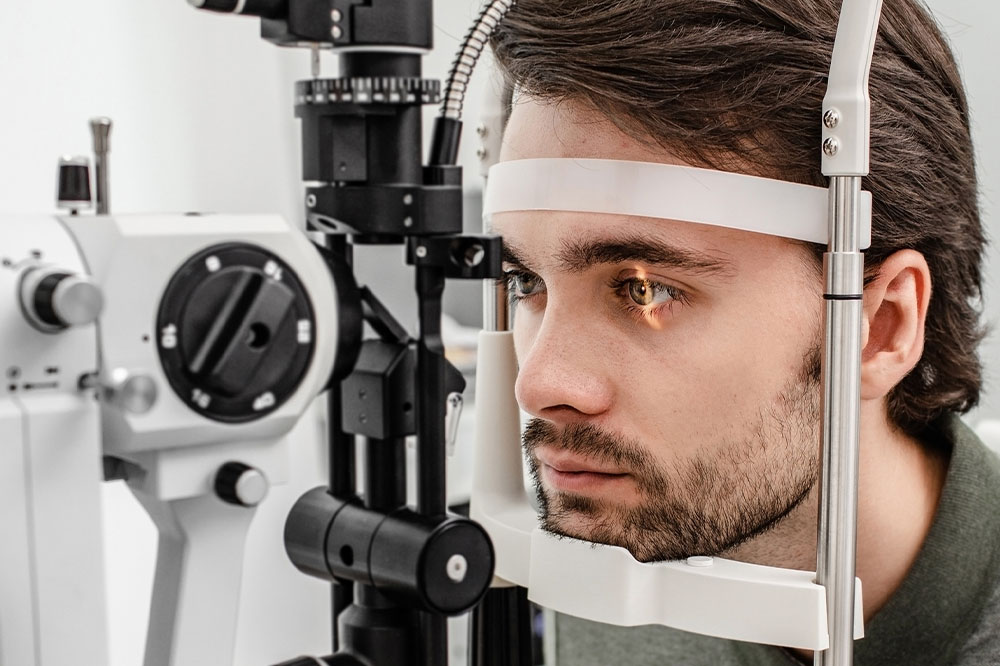6 signs of poor eyesight caused by excessive blood sugar

High blood sugar can be caused by high amounts of sugar consumption, insulin deficiency, or in some other way. Either way, people with a high blood sugar ratio tend to have many health issues because of it. While high blood sugar affects nearly every organ and system in the human body, it arguably affects one’s vision most severely. Here are some signs of poor eyesight due to excessive sugar in one’s bloodstream:
Blurry vision
All the signs and symptoms listed here directly relate to diabetes, the ultimate frontier for high blood sugar-related health conditions. Blurry vision is one of the earlier signs of the dangerously high proportion of sugar in a person’s blood messing with their vision. Most people believe they need new glasses or contact lenses once their vision goes blurry. However, people need to get their eyes tested by an ophthalmologist to confirm whether they need a new pair of contact lenses or other diabetes-related treatment methods.
By bringing one’s blood sugar levels into the acceptable range of about 70 to 130 milligrams per deciliter before meals and less than 180 milligrams per deciliter about an hour or two after them, people can correct blurry vision. This meal correction takes up to three months for blurry vision to clear.
Cataracts
Diabetes is known as the silent killer due to its surprisingly wide array of symptoms and affected body areas. People with diabetes are more than likely to develop cataracts in their eyes at some point in their lives. Cataracts are characterized by the fogging or clouding of one’s natural eye lens. This phenomenon prevents light from entering the eye, causing partial or total vision impairment.
Cataracts are also a common part of the natural aging process. Many elderly individuals tend to develop it, and not everyone has diabetes. Therefore, one must consult their eye doctor when encountering cataracts for the first time. The health expert will inform the patient about the underlying reason for their cataracts.
Commonly, cataracts can be treated surgically. The timing is key, though. Cataracts tend to become stronger and more translucent with time. So, if they are not addressed immediately, people with cataracts are vulnerable to permanently losing their vision completely and irreversibly.
Diabetic retinopathy
Retinopathy is unmistakably linked with high blood sugar, unlike the earlier two diseases. This health condition involves damaged blood vessels in an individual’s retina. The retina is a group of cells on the backward zones of one’s eyes that absorb light and turn it into images that the optic nerve carries into the brain. So, this tiny organ is instrumental in a person’s vision.
Like most diabetes-induced vision-related health issues, diabetic retinopathy becomes more and more adverse with time. One needs to get checked by an eye doctor when they experience symptoms like blurry vision, double vision, and night blindness. If this condition is not diagnosed and treated on time, people living with it may permanently lose their vision.
Eye muscle paralysis
High blood sugar is known to damage the circulatory system and the transport of nutrients and oxygen to various parts of the body. This leads to the paralysis of the eye muscles in individuals. The eyes consist of several muscles that are interdependent. So, if one or two muscles are paralyzed, an individual’s overall vision gets adversely affected. As the eyes do not work in sync and the brain receives multiple inputs of the same images from both, people will experience double vision when they have eye muscle paralysis.
Glaucoma
Glaucoma is a condition caused by diabetes in which pressure builds in an individual’s eyes when the fluid within cannot normally drain as in normal circumstances. This damages the blood vessels and nerves around the area and adversely affects a person’s eyesight.
Frequent eye infections
High blood sugar and diabetes also adversely affect a person’s immunity. This means that people with these conditions are highly susceptible to frequent infections, bouts of cough and cold, and fevers from time to time. These include eye infections such as irritation, the growth of boils around one’s eyes, and others.
While many of these infections are seasonal, one needs to consult an eye doctor if the infections keep returning.









